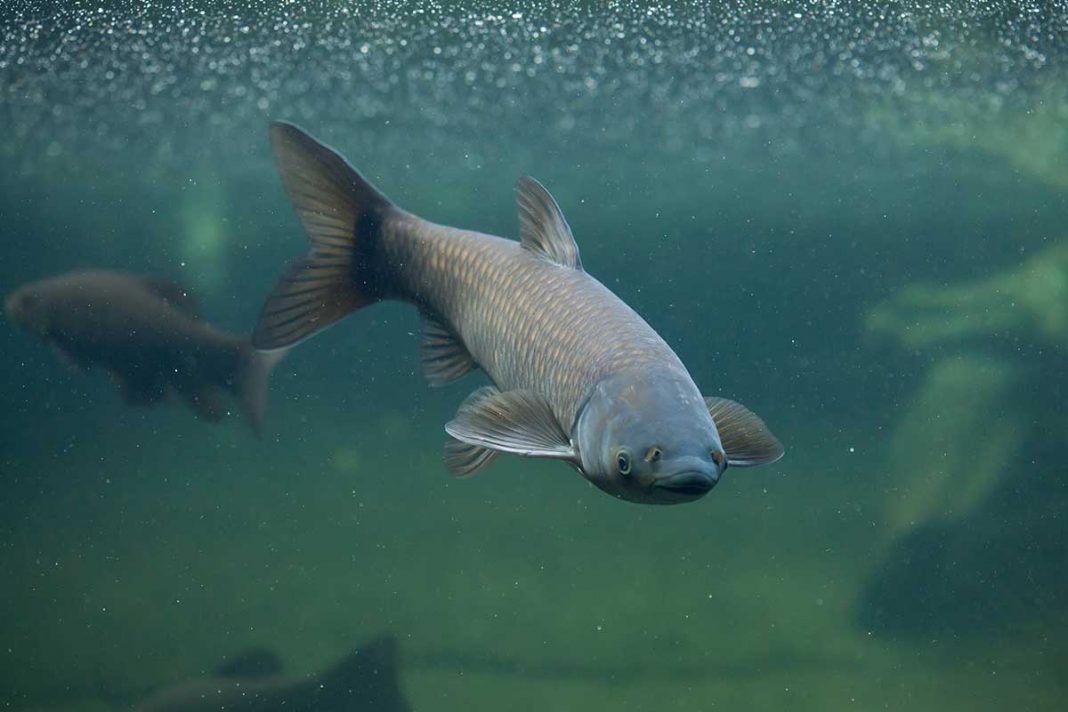ANN ARBOR, MICHIGAN—The United States Army Corps of Engineers (USACE) has announced plans to stop the spread of invasive carp in the Great Lakes and that’s good news, said a Great Lakes Fishery Commission (GLFC) representative.
“It is very good news,” said Marc Gaden, communications director and legislative liaison for GLFC. “It means the work that needs to be done is moving forward, and the US Congress is providing funding for the work.”
“I think it’s the next step in the Brandon Road lock in Illinois,” he said. “It’s the final report, and very good news.”
USACE is trying to keep the project moving forward by modifying the lock at Brandon Road and the physical structures, Mr. Gaden said. “They have been working on preliminary designs, for shovels in the ground (readiness).”
The plan is part of a multi-layered solution intended to contain a growing population of invasive carp in the Illinois River. Over the next six to eight years, the regiment will outfit an engineered channel in the Brandon Road Lock on the Des Plaines River, just outside of Chicago, with a series of high-tech barriers that will prevent invasive carp from travelling upstream to Lake Michigan while still allowing boats to pass through.
The first barrier will be underwater speakers that will emit noise at a frequency that should turn carp away from entering the channel. Next is an air bubble curtain at the entrance to the channel, designed to protect against any small carp that manage to slip through gaps formed by a vessel.
Once inside the channel, there will be more acoustic deterrents, followed by an electric barrier. The USACE plan to include electric insulation in the channel to reduce the safety risk to vessel operators and local staff. Finally, there will be a flushing lock near the end of the channel. This would shoot water downstream through the lock, carrying away any fish eggs or larva that managed to pass through the other barriers.
Politicians and environmental groups alike fully support the high-tech gauntlet. “Invasive species are a growing threat to our entire inland waterways system and to the countless Illinois communities and businesses that rely on strong and vibrant aquatic ecosystems,” said US Senator Tammy Duckworth in a statement. “The Brandon Road project is critical in protecting the Great Lakes’ exposure to invasive carp.”
Invasive carp, which include black carp, grass carp, silver carp and bighead carp, were brought to North America from Asia in the 1960s and 1970s, and quickly took root in US waterways, driving out native species and reaching a metre in length.
The invasive carp have replaced all native species in certain sections of the Mississippi River and make up 50 percent of the fish, by weight, in sections of the Illinois River. Both rivers feed into the Des Plaines River which connects to Lake Michigan through the Chicago River.
Thanks to initiatives implemented by both the US and Canadian governments, the carp have yet to establish themselves in the Great Lakes or any Ontario waterways, although a silver carp was captured in Lake Calumet, the largest body of water in Chicago and located only a few kilometres from Lake Michigan, in early August. After an intensive two-week monitoring period, no other invasive carp were spotted in the area.
“There was a summer scare in Calumet, Michigan,” said Mr. Gaden. “But everything worked well, monitoring and netting with the States of Michigan, Illinois and others. They used nets and monitored the lake. We’re cautiously optimistic this was a one-off.”
In January, President Joe Biden committed $225.8 million USD in funding for the Brandon Road project. This is enough to start pre-construction. The estimated cost for the entire project is $858 million.
Based on current projections, USACE plans to award construction contracts for the channel and barriers in 2024, with work expected to be complete between 2030 and 2032.




